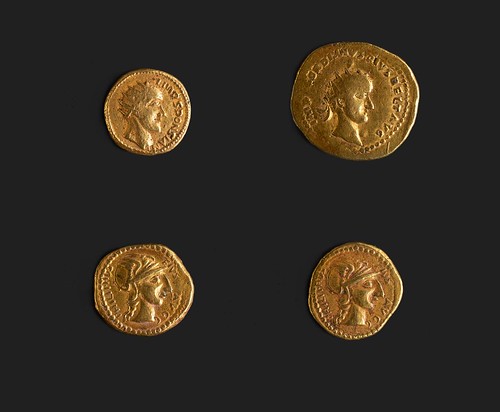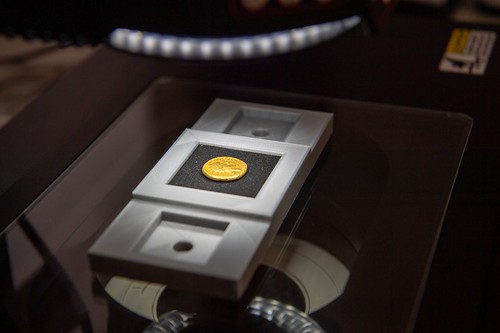
PREV ARTICLE
NEXT ARTICLE
FULL ISSUE
PREV FULL ISSUE
ANOTHER SPONSIAN ARTICLEPablo Hoffman of New York City passed along this Atlas Obscura article on the Sponsian coin issue. It's based on the Hunterian Museum's research, and has some images we haven't published before. There's a funny typo in one of the captions: " images of the Hungarian Museum's Sponsian coin..." -Editor
In 1713, eight gold coins of five different designs were dug up in Transylvania, in modern-day Romania, and acquired by a man named Carl Gustav Heraeus. One of them featured a face and the name
Pearson decided to look into the story behind this obscure possible emperor as an entertaining digression from the grim book he was writing.
While doing his early research, Pearson realized that there were no clear photographs of the slightly infamous coins anywhere. The study, recently published in the journal PLoS, examined the four coins in the Glasgow collection, in addition to two other Roman gold coins of Gordian III and Philip I that are thought to be authentic. The study concluded that the four coins, as appearances suggested, had been buried in soil for a substantial period of time, and were already deeply worn before their interment. This suggests that they had actually been in circulation in antiquity. It seemed possible from the first scientific analysis of a Sponsian coin that he could represent a real, lost Roman emperor.
The third century was a bad time for the vast empire, and it was a period that saw rapid, constant changes in political leadership. Between A.D. 235 and A.D. 284, there were at least 26 claimants to the title of emperor, mostly generals. When the Sponsian coins were first discovered, scholars thought they had identified a new emperor or usurper who had claimed the title in A.D. 249. But then 19th-century French numismatist Henri Cohen dismissed them as
Pearson's study, however, appears to have opened the discussion once again. 
Four coins in the Glasgow collection were examined (clockwise from top left): Sponsian, Gordian III, and two of Philip (I or II)
To read the complete article, see:
Wayne Homren, Editor The Numismatic Bibliomania Society is a non-profit organization promoting numismatic literature. See our web site at coinbooks.org. To submit items for publication in The E-Sylum, write to the Editor at this address: whomren@gmail.com To subscribe go to: https://my.binhost.com/lists/listinfo/esylum All Rights Reserved. NBS Home Page Contact the NBS webmaster 
|

